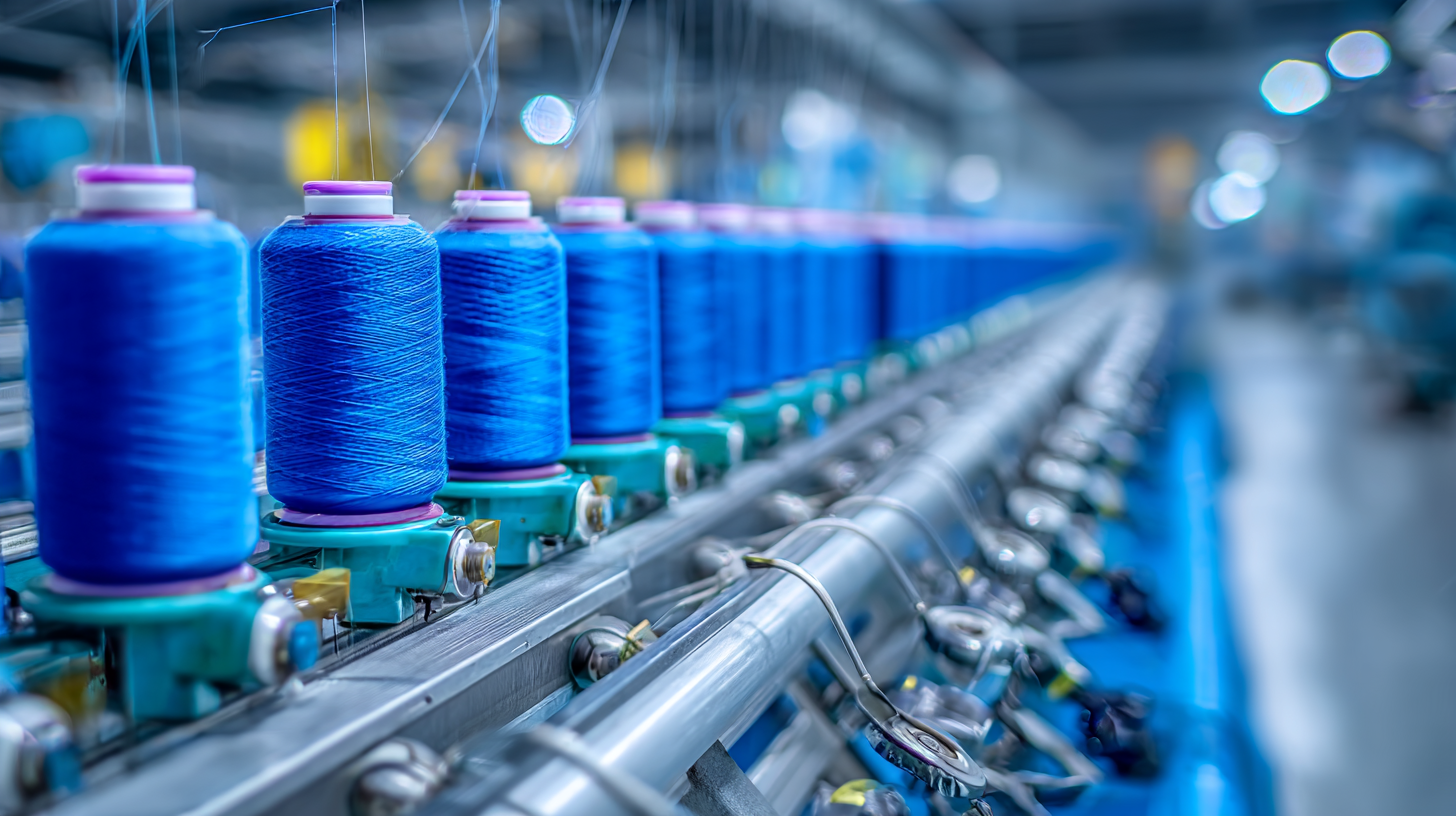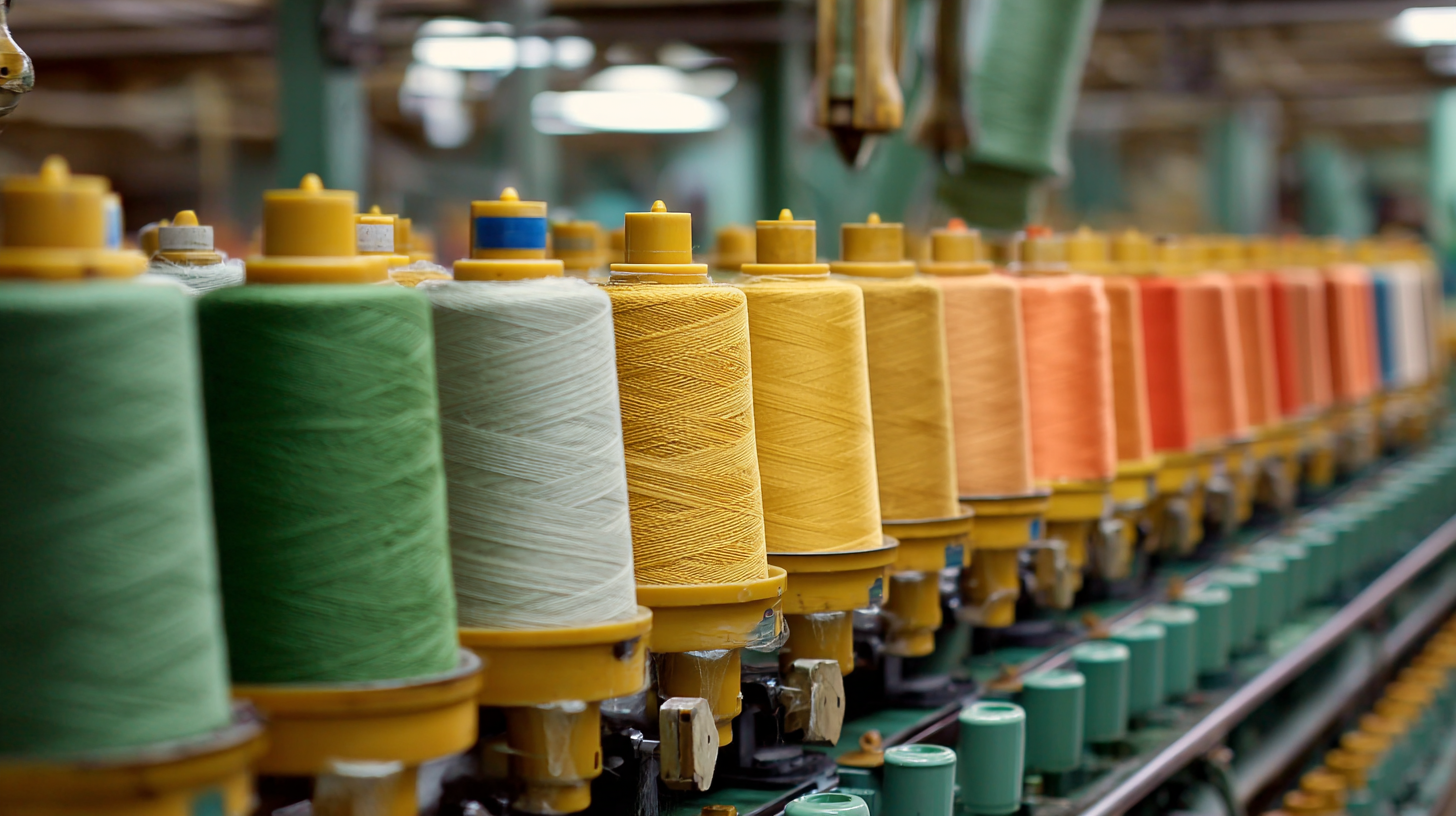Leave Your Message
The textile industry is undergoing a significant transformation, driven by rapid advancements in technology and the increasing demand for efficiency and sustainability. As we look towards 2025, the impact of the best textile industry machines is expected to redefine market dynamics, shaping production processes and consumer trends alike. According to a report by MarketsandMarkets, the global textile machinery market is projected to reach USD 26.23 billion by 2025, growing at a CAGR of 6.2%. This surge is attributed to the rise of automation, digitalization, and smart manufacturing techniques, which enhance operational efficiency and reduce waste. As companies invest in cutting-edge textile industry machines, we anticipate a shift towards more agile and responsive manufacturing systems that can adapt to evolving customer needs, ultimately transforming the landscape of the textile sector.

As the textile industry continues to evolve, China's position as a market leader by 2025 will be significantly shaped by innovations in textile machinery. According to a recent report by Mordor Intelligence, the global textile machinery market is projected to reach USD 25 billion by 2026, growing at a CAGR of approximately 6.5%. This growth presents a tremendous opportunity for Chinese manufacturers to enhance their competitiveness through advanced machinery. Technologies such as automated weaving, digital printing, and artificial intelligence-driven production lines are set to revolutionize efficiency and consistency in textile production.

Tip: Investing in smart textile machines can lead to reduced waste and faster turnaround times, making your operations more sustainable and cost-effective. Embracing these innovations not only increases production capacity but also meets the rising consumer demand for high-quality, eco-friendly textiles.
The increasing focus on sustainability is prompting manufacturers to integrate eco-friendly practices into their operations. A report from ResearchAndMarkets suggests that sustainable textiles will account for about 30% of the market share by 2025, pushing manufacturers to adopt high-efficiency machinery that minimizes environmental impact. By prioritizing sustainability in textile machinery innovations, China can strengthen its leadership and set new standards for the global market.
Tip: To stay competitive, consider implementing technologies that allow for real-time monitoring of resource usage, helping you to optimize processes and reduce your carbon footprint.
The global textile industry is experiencing a seismic shift, largely driven by innovations in Chinese textile technology. As Chinese universities and companies enhance their innovation capabilities, they are not just improving production efficiency but also setting new standards in quality and sustainability. This evolution is expected to bolster China's position in the global textile market, with exports becoming increasingly competitive. Consequently, countries reliant on textile imports should closely monitor these developments, as they will influence global pricing, production standards, and supply chain dynamics.
Furthermore, the implications of changing technology transfer policies toward China cannot be overlooked. As Western nations rethink their approach, it becomes vital to recognize the strategic importance of engaging with China's innovation landscape. By fostering partnerships and adapting to China's advancements, stakeholders can leverage mutual growth opportunities while also navigating the complexities of international trade. This evolving landscape underscores the necessity for a collaborative framework that aligns with the emerging trends in textile technology, ensuring that both domestic and global markets are equipped to thrive amidst these changes.
As the textile industry evolves, advanced machinery is becoming the cornerstone of enhanced efficiency in production. In 2025, the integration of cutting-edge technologies such as automation, AI, and IoT will set new performance metrics for textile manufacturing. These machines not only streamline operations but also minimize waste, ensuring sustainable practices that are increasingly vital in today’s eco-conscious market.

Moreover, advanced machinery contributes to superior quality in textile production. High-speed knitting and weaving machines come equipped with precision control systems that reduce defects and improve consistency across batches. This focus on quality translates into significant cost savings and higher customer satisfaction. By investing in such technologies, textile manufacturers can position themselves competitively in a rapidly changing marketplace, capitalizing on the growing demand for both efficiency and sustainability.
In the fast-evolving landscape of the textile industry, automation is emerging as a cornerstone of modernization, particularly within China’s burgeoning market. As companies increasingly adopt advanced machinery, the efficiency and productivity of textile manufacturing are experiencing unprecedented boosts. Automated machines not only streamline production processes but also reduce labor costs and minimize human error, leading to higher quality outputs. This technological shift is pivotal as China strives to maintain its competitive edge in the global textile arena.
Moreover, the integration of automation in the textile sector facilitates real-time data analysis, enabling companies to make informed decisions swiftly. With smart machines equipped with IoT capabilities, manufacturers can gather insights on operational performance, inventory management, and supply chain dynamics. This data-driven approach not only enhances productivity but also fosters innovation by allowing brands to respond rapidly to market changes and consumer demands. As China embraces these transformative technologies, the textile industry is poised for a revolutionary change that will redefine its future dynamics by 2025 and beyond.
As the textile industry moves toward 2025, sustainability is taking center stage, with eco-friendly textile machines poised to transform market dynamics. According to a recent report by Smithers Pira, the global market for sustainable textile machinery is projected to grow at a CAGR of 6.8%, reaching $12 billion by 2025. This growth is fueled by increasing consumer demand for environmentally friendly products and stricter regulations on waste management and emissions. Manufacturers are now prioritizing innovations that minimize energy consumption and waste generation, reflecting a significant shift toward a circular economy.
Notably, advancements in technology have led to the development of machines that use waterless dyeing processes and biodegradable materials. For instance, the introduction of solvent-free dyeing technologies has proven to reduce water usage by up to 90% and energy consumption by 50%, as reported by the International Textile Manufacturers Federation. Such innovations not only cater to eco-conscious consumers but also enhance production efficiency, allowing companies to achieve sustainable growth in a competitive market. The integration of these eco-friendly textile machines will be vital for companies looking to stay ahead in the rapidly evolving textile landscape.
